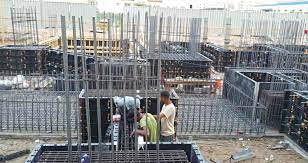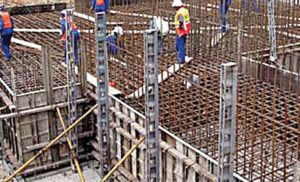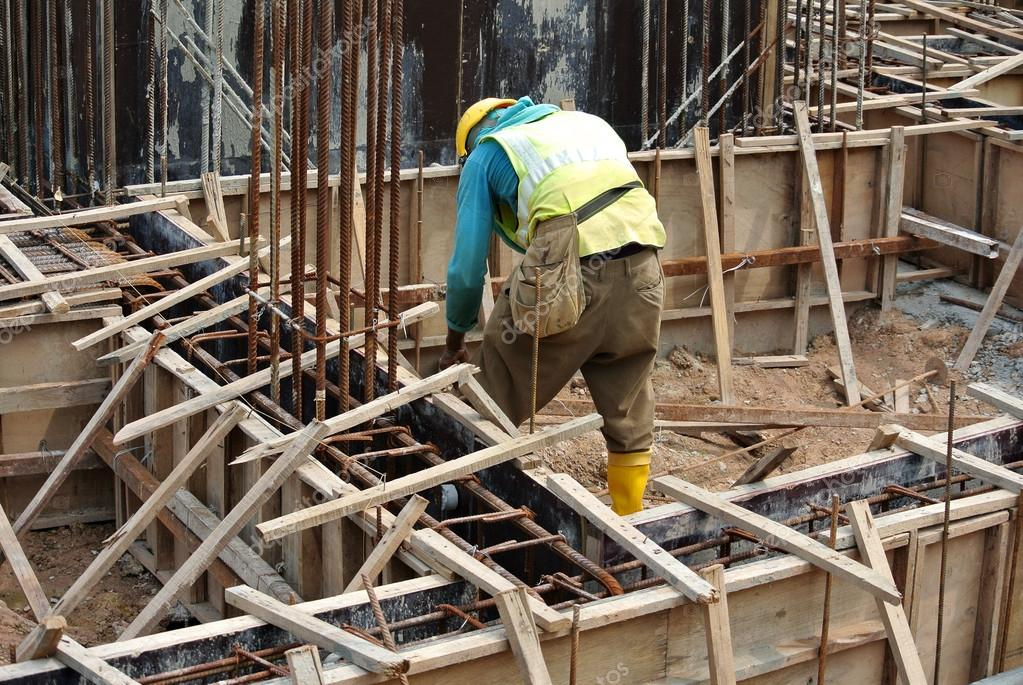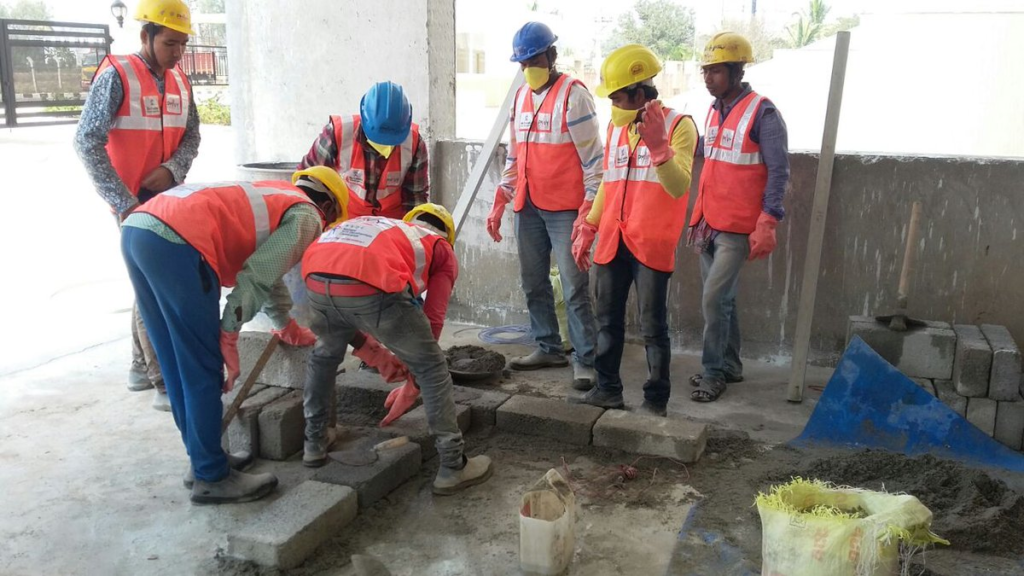Shuttering Carpenter (Elective: System Formwork / Conventional Formwork) click here
Brief Job Description
Shuttering Carpenter (System/ Conventional) is responsible for making shutters and assembling system/
conventional formwork for R.C.C structures such as columns, beams, slabs, walls, foundations and other
similar structures
Personal Attributes
The shuttering carpenter (system/ conventional) is expected to be physically fit to work across various
locations with varied environmental conditions. The person should be organized, diligent, methodical,
safety-conscious, and a prompt decision-maker. In addition to being a team player, the individual should
have good communication skills.
Make wooden shutters used in shuttering carpentry
Description
This unit describes the skills and knowledge required to make wooden shutters used in shuttering
carpentry
Scope
The scope covers the following :
Cutting, sizing, and planning of timber and plywood using appropriate tools.
Make wooden shutter panel board.
Elements and Performance Criteria
Cutting, sizing, and planning of timber and plywood using appropriate tools
To be competent, the user/individual on the job must be able to:
PC1. use regular hand tools such as hand saw, chisel, jack hammer, nailing hammer, hand drill
and other tools efficiently
PC2. use power tools and machines such as circular saw, hand drill machine, table mounted saw,
planning machine and power drilling machine for cutting, sizing and planning of timber and
plywood

PC3. follow ergonomic principles while operating the tools and machines
PC4. store and maintain all the relevant tools and machines
Make wooden shutter panel board
To be competent, the user/individual on the job must be able to:
PC5. carry out visual check to ensure that timber, plywood are as per quality and requirements for
making shutters
PC6. prepare “cutting plan” for cutting of the plywood as per the sketches / schematic working
drawing
PC7. check that all fixtures, consumables and materials are available for shutter making
PC8. measure and mark the plywood/ timber using appropriate tools as per requirement
PC9. measure and mark form sheathing and stiffeners according to instructions and sketches
PC10. cut form sheathing material (plywood) and stiffeners (timber) within the tolerance limit and
as per instructions / specifications
PC11. make wooden shutter panels using suitable joints as per specifications
PC12. smooth corners and edges of panels using appropriate tools
PC13. carry out nailing work as per standard practice ensuring rigidity of joints
PC14. ensure that shutter board dimensions are as per sketch
Knowledge and Understanding (KU)
The individual on the job needs to know and understand:
KU1. standard procedure for shuttering works
KU2. safety rules and regulations for handling and storing relevant tools, equipment, and
materials required for relevant works in accordance with organizational norms
KU3. importance of personal protection including the use of related safety gears & equipment in
accordance with organizational norms
KU4. service request procedures for tools, materials and equipments
KU5. procedure for maintenance of tools and equipment
KU6. basic sketches / schematic working drawing relevant to making shutters, frames and moulds
KU7. basic principles of measurement, geometry and arithmetic calculation
KU8. linear conversion of units
KU9. units of measurements
KU10. different types of plywood and timber with their specifications and quality checks, as per
requirements
KU11. how to select & use different carpentry tools and appropriate materials
KU12. standard size of all carpentry tools, materials and components
KU13. how to mark and lay out form sheathing and stiffeners as per requirements
KU14. appropriate methodology for cutting of form sheathing and stiffeners
KU15. how to carry out visual checks for plywood and timber
KU16. different types of joints such as dovetail, ten non & mortise, lap joints
KU17. use of the measurement and marking tools relevant to formwork carpentry
KU18. electrical safety while using power tools for making shutters
KU19. handling of hand / power tools and basic maintenance of tools
Generic Skills (GS)
User/individual on the job needs to know how to:
GS1. write in one or more language, preferably in the local language of the site
GS2. read sketches, instructions provided for the work, and various signboards, safety rules,
safety tags, exit route information in one or more languages, preferably in the local language
of the site
GS3. speak in one or more language, preferably one of the local language at the site
GS4. communicate orally and effectively with team members
GS5. analyze the safety aspect of the workplace
GS6. plan work and organize required resource effectively
GS7. complete work as per agreed time schedule and quality parameters
GS8. resolve any conflict within the teammates
GS9. evaluate the complexity of the tasks
GS10. identify any violation of safety norms during the work
Carry out quality check for shuttering works
Description
This unit describes the skills and knowledge required to carry out quality checks for the shuttering works

Scope
The scope covers the following :
Ensure the quality of shuttering works for proper functioning
Elements and Performance Criteria
Ensure the quality of shuttering works for proper functioning
To be competent, the user/individual on the job must be able to:
PC1. examine the fixed shutters with respect to the survey layouts/ drawings
PC2. inspect if the release agent has been applied
PC3. check if the cover of reinforcement steel is as per the specifications
PC4. inspect joints of plywood and timber
PC5. check diagonal dimensions for its accuracy and take corrective action if a twist is observed
PC6. repair the damaged formwork boards / plates/ other components
PC7. ensure the water tightness of the whole shuttering / formwork system before concreting
work
PC8. check plumb to ensure verticality is within tolerance limit
PC9. check dimensions according to sketches / instructions to ensure that they are within
tolerance limit
PC10. check props for verticality, position and spacing in case of load bearing support
PC11. check lines and levels according to sketches / instructions to ensure that they are within
tolerance limit
PC12. inspect the formwork supports for its stability
PC13. obtain approvals for the erected formwork from superiors and rectify errors if any
Knowledge and Understanding (KU)
The individual on the job needs to know and understand:
KU1. standard procedure for shuttering works
KU2. safety rules and regulations for handling and storing relevant tools, equipment, and
materials required for relevant works in accordance with organizational norms
KU3. importance of personal protection including the use of related safety gears & equipment in
accordance with organizational norms
KU4. service request procedures for tools, materials and equipment
KU5. procedure for maintenance of tools and equipment
KU6. basic sketches / schematic working drawing relevant for erecting and dismantling system
formwork
KU7. basic principles of measurement, geometry and arithmetic calculation
KU8. major types of system formwork (Cuplock, DOKA, PERI, Mivan, Aluform) and their appropriate
applications
KU9. how to check for line, level and alignment
KU10. importance of quality checks in shuttering works
KU11. maximum tolerance limits for key quality checks for shuttering works as per IS / International
codes
KU12. how to carry out rectification of shuttering works
KU13. basics and fundamentals of reinforcement works
KU14. basics and fundamentals of concreting works
KU15. materials and components used in shuttering works
KU16. suitability of release agent applied

Generic Skills (GS)
User/individual on the job needs to know how to:
GS1. write in one or more language, preferably the local language at the site
GS2. read sketches, instructions provided for the work, and various signboards, safety rules,
safety tags, exit route information in one or more languages, preferably in the local language
of the site
GS3. speak in one or more language, preferably one of the local language at site
GS4. communicate orally and effectively with team members
GS5. analyze the safety aspect of the workplace
GS6. plan work and organize required resource effectively
GS7. complete work as per agreed time schedule and quality parameters
GS8. resolve any conflict within the teammates
GS9. evaluate the complexity of the tasks
GS10. identify any violation of safety norms during the work
Work effectively in a team to deliver desired results at the workplace
Description
This unit describes the skills and knowledge required to work effectively within a team to achieve the
desired results
Scope
The scope covers the following :
Interact and communicate in an effective manner
Support co-workers to execute the project requirements Practice inclusion
Elements and Performance Criteria
Interact and communicate in an effective manner
To be competent, the user/individual on the job must be able to:
PC1. pass on work related information/ requirement clearly to the team members
PC2. inform co-workers and superiors about any kind of deviations from work
PC3. report any unresolved problem to the supervisor immediately
PC4. obtain instructions from superiors and respond on the same
PC5. communicate to team members/subordinates for appropriate work technique and method
PC6. seek clarification and advice as per the requirement
Support co-workers to execute the project requirements
To be competent, the user/individual on the job must be able to:
PC7. hand over the required material, tools, tackles, equipment and work fronts timely to
interfacing teams
PC8. work together with co-workers in a synchronized manner
Practice inclusion
To be competent, the user/individual on the job must be able to:
PC9. maintain cultural inclusivity at work place
PC10. maintain disability friendly work practices
PC11. follow gender neutral practices at workplace
PC12. address discriminatory and offensive behavior in a professional manner as per
organizational policy
Knowledge and Understanding (KU)
The individual on the job needs to know and understand:
KU1. own roles and responsibilities
KU2. importance of effective communication
KU3. the consequence of poor teamwork on project outcomes, timelines, safety at the
construction site, etc.

KU4. different modes of communication used at workplace
KU5. importance of creating healthy and cooperative work environment among the gangs of
workers
KU6. different activities within the work area where interaction with other workers is required
KU7. applicable techniques of work, properties of materials used, tools and tackles used, safety
standards that co-workers might need as per the requirement
KU8. importance of proper and effective communication and the expected adverse effects in case
of failure relating to quality, timeliness, safety, risks at the construction project site
KU9. importance and need of supporting co-workers facing problems for the smooth functioning of
work
KU10. the fundamental concept of gender equality
KU11. how to recognize and be sensitive to issues of disability, culture and gender
KU12. legislation, policies, and procedures relating to gender sensitivity and cultural diversity
including their impact on the area of operation
Generic Skills (GS)
User/individual on the job needs to know how to:
GS1. write in at least one language, preferably in the local language of the site
GS2. read the communication regarding work completion, materials used, tools and tackles used,
the resource required, etc,
GS3. speak in one or more languages, preferably in one of the local language of the site
GS4. listen and follow instructions / communication shared by superiors/ co-workers regarding
team requirements or interfaces during work processes
GS5. communicate orally and effectively with co-workers considering their educational and social
background
GS6. decide on what information is to be shared with co-workers within the team or to the
interfacing gang of workers
GS7. plan work and organize the required resources in coordination with team members
GS8. complete all assigned task in coordination with team members
GS9. take initiative in resolving issues among co-workers or report the same to superiors
GS10. ensure best ways of coordination among team members
GS11. evaluate the complexity of task and determine if any guidance is required from superiors
Plan and organize work to meet expected outcomes
Description
This unit describes the knowledge and the skills required for an individual to plan and organize own work in order to meet expected outcome

Scope
The scope covers the following :
Plan and prepare for work
Organize required resources as per work plan
Complete work as per the plan
Elements and Performance Criteria
Plan and prepare for work
To be competent, the user/individual on the job must be able to:
PC1. identify the targets and timelines set by superiors
PC2. determine the work requirements corresponding to
task(drawings/schedules/instructions/methodology), safety, tools and equipment prior to
commencement of task
PC3. plan the work by analyzing the required outcomes, work procedures, allotted time, resource
availability and known priorities
PC4. prepare the work areas in coordination with team members
PC5. plan for waste collection and disposal prior to and after completion of work
Organize required resources as per work plan
To be competent, the user/individual on the job must be able to:
PC6. arrange the required manpower prior to commencement of work
PC7. organize the required materials, tools and tackles required for the task
Complete work as per the plan
To be competent, the user/individual on the job must be able to:
PC8. engage allocated manpower in an appropriate manner
PC9. employ correct tools, tackles and equipment for the desired work
PC10. provide guidance to the subordinates to obtain desired outcome
PC11. use resources in an optimum manner to avoid any unnecessary wastage
PC12. use tools, tackles and equipment carefully to avoid damage
PC13. ensure the work processes adopted are in line with the specified standards and instructions
PC14. complete the work with the allocated resources within specified time
PC15. clean and organize the workplace after completion of task
Knowledge and Understanding (KU)
The individual on the job needs to know and understand:
KU1. importance of proper housekeeping including safe waste disposal
KU2. policies, procedures and work targets set by superiors
KU3. how to identify work activities that need to be planned and organized
KU4. how to determine the task requirements
KU5. how to determine the quality requirements related to the task
KU6. how to undertake all aspect of planning and organizing the task, including interpretation of
task, reading drawing/schedules, arranging resources, reporting problems etc.
KU7. how to implement the planned activities
KU8. how to use available resources in a judicious and appropriate manner to minimize wastages or
damage
Generic Skills (GS)
User/individual on the job needs to know how to:
GS1. write in one or more language, preferably the local language at the site
GS2. read communication from co-workers, superiors and notices from other departments as per
requirement of the level
GS3. speak in one or more language, preferably one of the local language at the site
GS4. follow communication shared by co-workers regarding standard work processes, resources
available, timelines, etc.
GS5. communicate effectively with co-workers and subordinates
GS6. decide on what sequence is to be adopted for execution of work
GS7. plan and organize the materials, tools, tackles and equipment required to execute the work
GS8. complete all assigned task with proper planning and organizing
GS9. analyze areas of work which could result in a delay of work, wastage of material or damage
to tools and tackles
GS10. evaluate potential solutions to minimize avoidable delays and wastages at the construction
site
Work according to personal health, safety and environment protocols at construction site
Description
This NOS covers the skill and knowledge required for an individual to work according to personal health,
safety and environmental protocols at construction site

Scope
The scope covers the following :
Follow safety norms as defined by organization
Adopt healthy & safe work practices
Implement good housekeeping and environment protection process and activities
Follow infection control guidelines as per applicability
Elements and Performance Criteria
Follow safety norms as defined by the organization
To be competent, the user/individual on the job must be able to:
PC1. identify and report any hazards, risks or breaches in site safety to the appropriate authority
PC2. follow emergency and evacuation procedures in case of accidents, fires, natural calamities
PC3. follow recommended safe practices in handling construction materials, including chemical
and hazardous material whenever applicable
PC4. follow all the protocols and safety techniques conveyed during safety awareness programs
like Tool Box Talks, safety demonstrations and mock drills conducted at the site
PC5. select and operate different types of fire extinguishers corresponding to various types of fires
as per EHS guideline
PC6. identify near miss, unsafe condition and unsafe act
Adopt healthy & safe work practices
To be competent, the user/individual on the job must be able to:
PC7. use appropriate Personal Protective Equipment (PPE) as per work requirements for : Head
Protection, Ear protection, Fall Protection ,Foot Protection, Face and Eye Protection, Hand
and Body Protection , and Respiratory Protection (if required)
PC8. handle all required tools, tackles, materials and equipment safely
PC9. follow safe disposal of waste, harmful and hazardous materials as per EHS guidelines
PC10. check and install all safety equipment as per standard guidelines
PC11. follow safety protocols and practices as laid down by site EHS department
PC12. obtain “height pass” clearance for working at heights
Implement good housekeeping practices
To be competent, the user/individual on the job must be able to:
PC13. collect, segregate and deposit construction waste into appropriate containers based on their
toxicity or hazardous nature
PC14. apply ergonomic principles wherever required
Follow infection control guidelines as per applicability
To be competent, the user/individual on the job must be able to:
PC15. follow recommended personal hygiene, workplace hygiene and sanitization practices
PC16. clean and disinfect all materials, tools and supplies before and after use
PC17. report immediately to concerned authorities regarding signs and symptoms of illness of self
and others
Knowledge and Understanding (KU)
The individual on the job needs to know and understand:
KU1. reporting procedures in cases of breaches or hazards for site safety, accidents, and
emergency situations as per guidelines
KU2. types of safety hazards at construction sites
KU3. basic ergonomic principles as per applicability
KU4. the procedure for responding to accidents and other emergencies at site
KU5. use of appropriate personal protective equipment based on various working conditions
KU6. importance of handling tools, equipment, and materials as per applicable norms
KU7. effect of construction material on health and environments as per applicability
KU8. various environmental protection methods as per applicability
KU9. storage of waste including non-combustible scrap material and debris, combustible scrap
material and debris, general construction waste and trash (non-toxic, non-hazardous), any
other hazardous wastes and any other flammable wastes at the appropriate location
KU10. how to keep the workplace neat and tidy so as to be safe
KU11. how to use hazardous material in a safe and appropriate manner as per applicability
KU12. types of fire
KU13. procedure of operating different types of fire extinguishers
KU14. safety relevant to tools, tackles, and equipment as per applicability
KU15. housekeeping activities relevant to task
KU16. ways of transmission of infection
KU17. ways to manage infectious risks at the workplace
KU18. different methods of cleaning, disinfection, sterilization, and sanitization
KU19. symptoms of infection like fever, cough, redness, swelling, and inflammation
Generic Skills (GS)
User/individual on the job needs to know how to:
GS1. write in at least one language, preferably in the local language of the site
GS2. fill safety formats for near miss, unsafe conditions and safety suggestions
GS3. read in one or more language, preferably in the local language of the site
GS4. speak in one or more language, preferably in one of the local language of the site
GS5. listen to instructions/communication shared by site EHS and superiors regarding site safety,
and conducting the toolbox talk
GS6. identify potential safety risks and report to the appropriate authority
GS7. assess and analyze areas which may affect health, safety and environment protocol on the
site
Assemble and dismantle system formwork for R.C.C structures
Description
This unit describes the skills and knowledge required to assemble and dismantle system formwork for RCC structures

Scope
The scope covers the following :
Assemble system formwork for RCC structures
Dismantle system formwork
Elements and Performance Criteria
Assemble system formwork for RCC structures
To be competent, the user/individual on the job must be able to:
PC1. clean the shutter panels before using for shuttering work
PC2. check the supporting base prior to erection of system formwork
PC3. check and ensure all tools, material, components are available as per requirements
PC4. check that fixing of fasteners is as per system used and as per the requirements
PC5. apply release agents to sheathing material as per specifications and instructions
PC6. place and fix kicker for column, walls and check its position with respect to line, alignment,
and necessary grid dimension
PC7. position and set out formwork manually or by mechanical means as per instructions/drawing
and requirement
PC8. use appropriate methods/ tools for levelling of the formwork such as water level pipe, dumpy
level, auto level or laser levelling machine
PC9. position and provide necessary support to the formwork using props or other appropriate
components based on system used
PC10. check for block-outs and cast-in services at specified locations
PC11. plug all openings and gaps using foam sheet and adhesive tape or other appropriate
materials
PC12. ensure water tightness of form by providing form sheet or necessary packing material
PC13. position and fix props properly and check for plumb, position and spacing as specified or
instructed
PC14. provide horizontal or vertical construction joints in case of structural element such as beam ,
column, slab as per standard practices
PC15. ensure tightness of tie rods, supports, and bracings
PC16. check that line, level, alignment and plumb of the erected formwork is within tolerance limit
PC17. check the linear or angular dimensions for accuracy and take necessary corrective measures
if required
Dismantle system formwork
To be competent, the user/individual on the job must be able to:
PC18. plan sequence of dismantling procedure as per standard practice and system used
PC19. remove bracing and all other supports provided to the formwork sequentially and safely as
instructed
PC20. remove sheathing material sequentially using proper tools and tackles to avoid damage to
structure or sheathing materials
PC21. dismantle formwork shutters manually or by mechanical means as per requirement
PC22. repair, clean and stack all the formwork materials/ components after dismantling
Knowledge and Understanding (KU)
The individual on the job needs to know and understand:
KU1. standard procedure for shuttering works
KU2. safety rules and regulations for handling and storing relevant tools, equipment, and
materials required for relevant works in accordance with organizational norms
KU3. importance of personal protection including the use of related safety gears & equipment in
accordance with organizational norms
KU4. service request procedures for tools, materials and equipment as per organizational norms
KU5. procedure for maintenance of tools and equipment
KU6. basic principles of measurement, geometry and arithmetic calculation
KU7. linear conversion of units
KU8. units of measurements
KU9. different types of measurements and marking tools
KU10. how to select and use different types of formwork tools
KU11. standard size of all formwork tools, material and components
KU12. use of water level tube for leveling work
KU13. major types of system formwork such as Cuplock, DOKA, PERI, Mivan,Aluform and other
similar system and their appropriate applications
KU14. how to erect and brace major types of formwork as per site requirements
KU15. properties and application of release agents
KU16. how to check for line, level and alignment
Generic Skills (GS)
User/individual on the job needs to know how to:
GS1. write in at least one language, preferably in the local language of the site
GS2. read sketches/routine work drawings, instructions provided for the work, and various
signboards, safety rules, safety tags, exit route information in one or more languages,
preferably in the local language of the site
GS3. speak in one or more language, preferably one of the local language at the site
GS4. communicate orally and effectively with team members
GS5. analyze the safety aspect of the workplace
GS6. plan work and organize required resource effectively
GS7. complete work as per agreed time schedule and quality parameters
GS8. resolve any conflict within the teammates
GS9. evaluate the complexity of the tasks
GS10. identify any violation of safety norms during the work
Assemble and dismantle conventional shuttering / formwork for RCC structures
Description
This unit describes the skills and knowledge required to assemble and dismantle conventional shuttering /
formwork for RCC structures
Scope
The scope covers the following :
Assemble conventional shuttering / formwork for R.C.C structures
Dismantle conventional formwork
Elements and Performance Criteria
Assemble conventional shuttering / formwork for R.C.C structures
To be competent, the user/individual on the job must be able to:
PC1. clean shutter panels prior to use
PC2. check suitability of supporting base prior to erection of conventional formwork
PC3. check that all tools, materials, components and fixtures are available as per requirements
PC4. identify critical areas of the formwork and perform “Dry-mock up” for them as per the given
instructions
PC5. apply release agents to sheathing material as per specifications and instruction
PC6. apply necessary soldier and walling
PC7. position and strike box-outs and bolt boxes, grout checks, level controls, angle fillets and
features
PC8. use appropriate methods/ tools for levelling the formwork such as water level pipe, dumpy
level, auto level or laser levelling machine
PC9. position and provide necessary support using runner pieces , timber , props, tie systems
appropriately
PC10. brace formwork support as per requirements and specifications
PC11. ensure water tightness of form by providing form sheet or appropriate packing material
PC12. check for proper fixing of tie rods, supports, bracings after erection
PC13. plug all openings and gaps using foam sheet and adhesive tape
PC14. check erected formwork for line, level, alignment within tolerance limit and provided
supports
PC15. check the linear and angular dimension for the accuracy and take necessary corrective
action if required
Dismantle conventional formwork
To be competent, the user/individual on the job must be able to:
PC16. plan sequence of dismantling procedure for the conventional formwork as per standard
practice
PC17. remove bracing and all other supports sequentially and safely as instructed
PC18. dismantle formwork shutters manually or by mechanical means as per the requirements
PC19. repair, clean and stack all the formwork materials/ components after dismantling
Knowledge and Understanding (KU)
The individual on the job needs to know and understand:
KU1. standard procedure for shuttering works
KU2. safety rules and regulations for handling and storing relevant tools, equipment, and
materials required for relevant works in accordance with organizational norms
KU3. importance of personal protection including the use of related safety gears & equipment in
accordance with organizational norms
KU4. service request procedures for tools, materials and equipment as per organizational norms
KU5. procedure for maintenance of tools and equipment
KU6. basic principles of measurement, geometry and arithmetic calculations
KU7. units of measurements and conversion of units
KU8. how to select & use different carpentry tools and materials
KU9. standard size of all carpentry tools, materials and components
KU10. how to erect and brace formwork
KU11. different types of material used in conventional shuttering , their selection and use
KU12. how to erect conventional staging using bamboo, ballies, pipe & coupler
KU13. different types of pipes, coupler, tying thread and other fixtures used in conventional staging
works
KU14. how to tie different types of knots and use of knots for connection between bamboos and bellies
KU15. properties and application of release agents
KU16. how to check for plumb, level and alignment
KU17. how to work with timber and non-timber based sheet materials for conventional formwork
KU18. how to position or attach tie systems, soldiers and walling
KU19. maximum tolerance limits for shuttering of various types of structures
Generic Skills (GS)
User/individual on the job needs to know how to:
GS1. write in at least one language, preferably in the local language of the site
GS2. read sketches/routine work drawings, instructions provided for the work, and various
signboards, safety rules, safety tags, exit route information in one or more languages,
preferably in the local language of the site
GS3. speak in one or more language, preferably one of the local language at the site
GS4. communicate orally and effectively with team members
GS5. analyze the safety aspect of the workplace
GS6. plan work and organize required resource effectively
GS7. complete work as per agreed time schedule and quality parameters
GS8. resolve any conflict within the teammates
GS9. evaluate the complexity of the tasks
GS10. identify any violation of safety norms during the work







